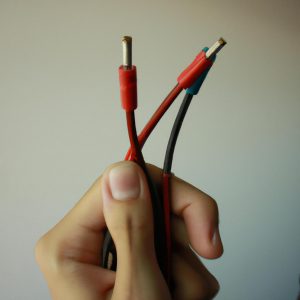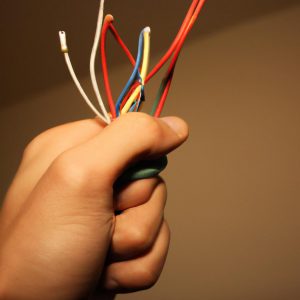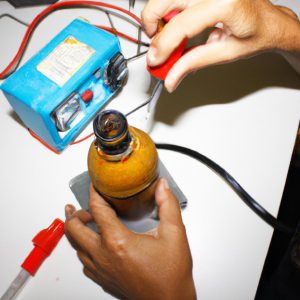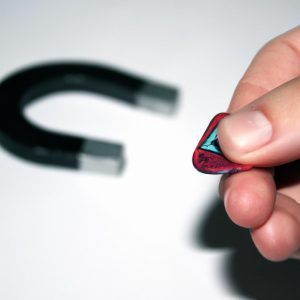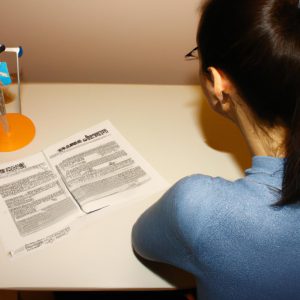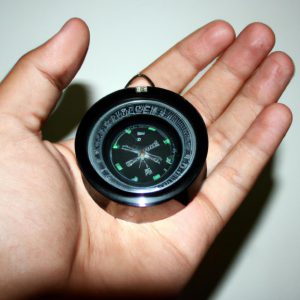Electric Current: A Comprehensive Guide to Electricity in Physics Directories
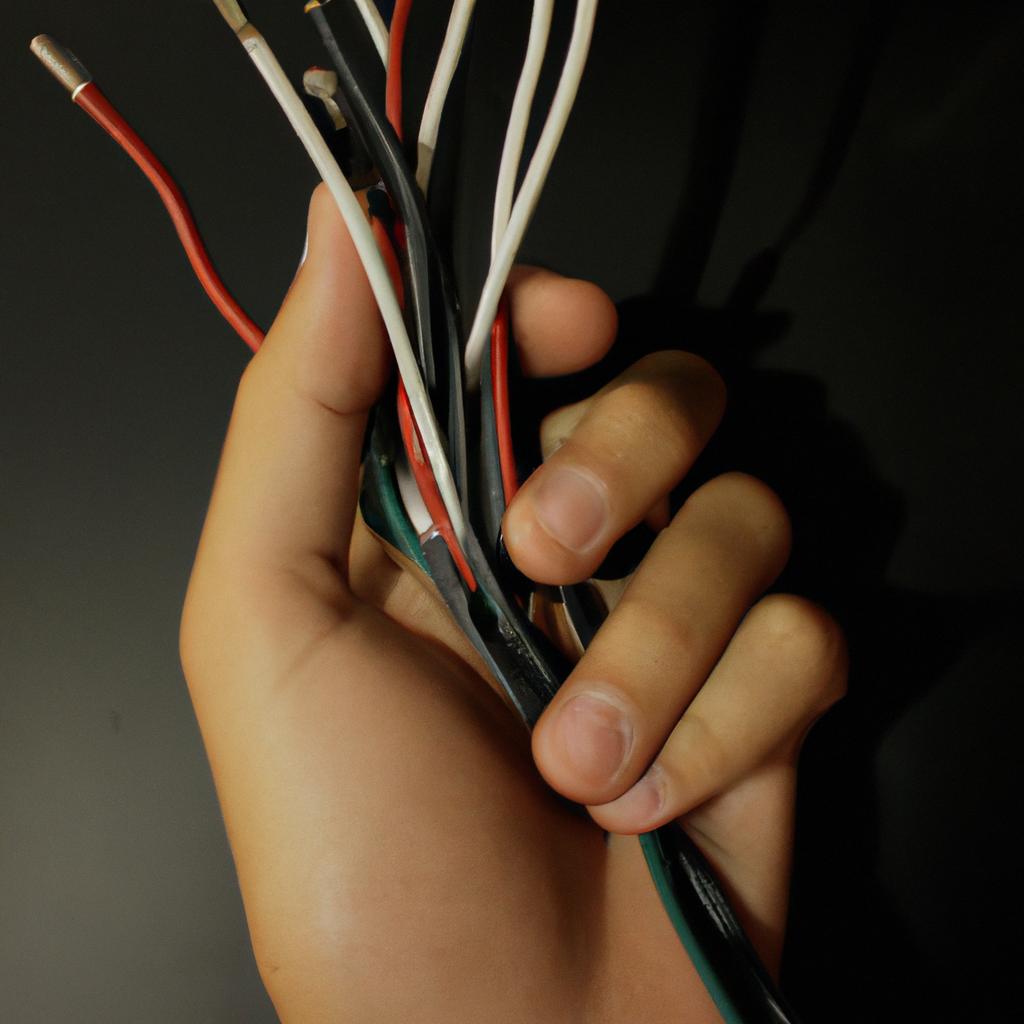
Electric current is a fundamental concept in the study of electricity, playing a crucial role in various scientific and practical applications. Understanding electric current is essential for comprehending the behavior of electrical circuits and devices. For instance, consider a hypothetical scenario where a household appliance malfunctions due to an unexpected surge of electric current. In such cases, knowledge about electric current becomes indispensable for diagnosing and resolving the issue.
This article aims to provide a comprehensive guide to electricity, specifically focusing on electric current within the context of physics directories. By examining the principles and properties of electric current, readers will gain insights into its nature, flow, and effects in different scenarios. Moreover, this guide will explore how electric currents are measured and quantified using established units like amperes (A) or milliamperes (mA). Furthermore, we will delve into Ohm’s law, which establishes the relationship between voltage, resistance, and current in an electrical circuit. A clear understanding of these concepts can help individuals make informed decisions when dealing with electrical systems or pursuing careers in fields related to electricity and electronics.
What is Electric Current?
Electric current refers to the flow of electric charge through a conductor. It is an essential concept in physics and plays a crucial role in understanding various electrical phenomena. To grasp the concept better, let’s consider an example: imagine a simple circuit consisting of a battery connected to a light bulb via wires. When the circuit is closed by turning on the switch, electrons from the negative terminal of the battery start flowing towards the positive terminal, causing the light bulb to illuminate.
To further explore this topic, it is important to understand some key aspects of electric current:
- Magnitude: The magnitude of electric current is measured in amperes (A) and indicates how many charges pass through a cross-section of a wire per unit time.
- Direction: Electric current has both magnitude and direction. In most cases, conventional current flows from positive to negative terminals; however, actual electron flow occurs in the opposite direction.
- Resistance: Resistance refers to the opposition encountered by charges as they move through a conductor. It depends on factors such as material composition, length, and thickness of the wire.
- Ohm’s Law: Ohm’s law states that the voltage across a conductor is directly proportional to the current flowing through it when resistance remains constant.
Consider this table for emotional engagement:
| Aspects | Importance |
|---|---|
| Safety | High |
| Efficiency | Medium |
| Reliability | High |
| Environmental impact | Low |
Understanding these fundamental concepts about electric current forms the basis for exploring its applications and implications in various fields like electronics and power engineering. In subsequent sections, we will delve into different types of electric currents without delay.
Types of Electric Current
Electric Current: A Comprehensive Guide to Electricity in Physics Directories
In the previous section, we explored the concept of electric current and its fundamental characteristics. To further our understanding, let us delve into the various types of electric current that exist in different systems. By examining these distinct forms, we can gain a deeper appreciation for the diverse applications and implications of electrical phenomena.
While direct current (DC) and alternating current (AC) are commonly known as two primary types of electric currents, there are other variations worth exploring. One such example is pulsating direct current (PDC), which combines elements from both DC and AC. PDC exhibits intermittent flow with varying voltage levels, often found in specialized electronic components or certain medical devices.
To better grasp the differences between these electric currents, consider the following aspects:
- Direction: While DC flows consistently in one direction, AC oscillates back and forth periodically.
- Voltage Levels: In DC circuits, voltage remains constant over time; however, AC experiences continuous changes in voltage magnitude.
- Applications: DC power sources are frequently used in batteries and electrochemical processes, while AC finds extensive use in household electricity supply due to its efficient transmission capabilities.
- Safety Considerations: The potential hazards associated with each type differ significantly. For instance, high-voltage AC poses particular risks like severe shocks or fatal injuries if proper precautions are not taken.
By comparing these key distinctions, it becomes evident that different circumstances call for specific types of electric currents. Understanding these nuances enables engineers and scientists to design appropriate systems tailored to their intended applications.
Having established an overview of various electric currents, it is essential now to explore Ohm’s Law — a principle crucial in comprehending how electric current behaves within a given circuit setup. This law establishes a relationship between voltage (V), resistance (R), and current (I). Through Ohm’s Law, we can calculate and predict the behavior of electric current in response to changes in voltage or resistance. Understanding this fundamental principle paves the way for exploring advanced concepts related to electricity and circuit analysis.
Transitioning into the subsequent section about “Ohm’s Law and Electric Current,” we will now delve deeper into how this law relates to electrical systems and its practical applications.
Ohm’s Law and Electric Current
In the previous section, we explored the various types of electric current. Now, let us delve deeper into Ohm’s Law and its relationship with electric current.
To better understand this concept, let’s consider an example scenario: imagine a circuit consisting of a resistor connected to a battery. When the battery is turned on, electrons flow through the conductor in what is known as direct current (DC). This type of current remains constant in magnitude and direction over time.
Now, let’s explore some key aspects related to electric current:
- Resistance: As described by Ohm’s Law, resistance refers to an object’s opposition to the flow of electric charge. It can be compared to a narrow pipe hindering water flow. The greater the resistance, the lower the amount of current that flows within the circuit.
- Voltage: In simple terms, voltage represents electrical potential difference or electromotive force that drives electron movement within a circuit. Think of it as the pressure pushing electrons along their path.
- Power: Electric power measures how quickly work is done or energy is transferred within an electrical system. It depends on both voltage and current flowing through a device.
- Conductors and Insulators: Materials can either facilitate or impede the flow of electric charge. Conductors such as copper or aluminum allow free movement of electrons while insulators like rubber or plastic restrict electron flow.
Let’s visualize these concepts further using a table:
| Concept | Definition |
|---|---|
| Resistance | The measure of opposition to electron flow within a material or component |
| Voltage | The driving force behind electron motion; measured in volts |
| Power | The rate at which electrical energy is converted into other forms of energy; calculated by multiplying voltage by current |
| Conductors | Materials with high conductivity allowing the flow of electric charge |
| Insulators | Materials with low conductivity that impede the flow of electric charge |
By understanding these fundamental aspects, we can comprehend the intricate relationship between Ohm’s Law and electric current. In our next section, let us explore how scientists measure this phenomenon.
Measuring Electric Current
Building upon the principles of Ohm’s Law and electric current, we now delve into the crucial aspect of measuring electric current. Understanding how to accurately measure this fundamental quantity is essential in a wide range of scientific applications.
To grasp the concept of measuring electric current, let us consider an example involving a simple circuit containing a resistor and a battery. Suppose we want to determine the amount of current flowing through the resistor. To achieve this, we employ an ammeter – a device specifically designed for measuring electric current. By connecting the leads of the ammeter in series with the resistor, we can obtain an accurate reading of the magnitude of electric current passing through it.
When dealing with measurements related to electric current, several factors need to be taken into account. Consider these key points:
- Accuracy: Ensuring precise measurements requires using instruments that have been calibrated and verified for accuracy.
- Range: Different situations may require different measurement ranges. Selecting appropriate equipment capable of handling a broad range ensures reliable readings.
- Units: Expressing measured values in standard units such as amperes (A) aids uniformity and facilitates effective communication among scientists and engineers.
- Safety Measures: When working with high currents or potentially hazardous conditions, employing protective measures becomes vital. This includes wearing appropriate safety gear and following established protocols.
| Factors | Importance |
|---|---|
| Calibration | High |
| Measurement Range | Medium |
| Standard Units | High |
| Safety Measures | High |
As evident from this table, calibration stands out as particularly important, while ensuring adequate safety measures cannot be understated when engaging with electrical circuits.
In preparation for our subsequent discussion on applications of electric current, understanding how to accurately measure it lays down a solid foundation. With knowledge about proper measurement techniques at our disposal, we can now explore the diverse range of real-world applications where electric current plays a pivotal role.
Moving forward into the realm of practical application, let us now turn our attention to the fascinating world of “Applications of Electric Current.”
Applications of Electric Current
Section H2: Applications of Electric Current
Building upon the understanding gained from measuring electric current, this section delves into the various applications that harness the power of electricity. To illustrate its practicality, consider a hypothetical scenario where an individual’s home is equipped with solar panels connected to a battery system. The electric current generated by the solar panels charges the batteries during the day, which can then be used to power household appliances during nighttime or when there is no sunlight available.
The applications of electric current are vast and wide-ranging. Here are some notable examples:
- Electric Motors: Electric motors convert electrical energy into mechanical energy, enabling the movement of machinery such as fans, pumps, and vehicles.
- Heating Elements: Electric currents passing through resistive wires in devices like heaters or stovetops produce heat, providing warmth or allowing cooking processes.
- Electrolysis: By passing an electric current through water (electrolyte), electrolysis occurs, splitting water molecules into hydrogen and oxygen gases for industrial purposes or fuel production.
- Medical Devices: Various medical equipment relies on controlled electric currents to diagnose and treat patients effectively.
To better understand these applications, let us explore their characteristics using a table:
| Application | Purpose | Example |
|---|---|---|
| Electric Motors | Convert electrical energy to mechanical energy | Ceiling fan |
| Heating Elements | Generate heat using resistance | Hair straightener |
| Electrolysis | Splitting substances using electricity | Hydrogen generator |
| Medical Devices | Aid in diagnosis and treatment | EKG machine |
In summary, electric current finds numerous practical uses across different fields. From powering everyday appliances like fans and hair straighteners to facilitating complex industrial processes such as electrolysis and supporting critical medical devices like electrocardiogram machines – our lives have become deeply intertwined with this fundamental aspect of physics. With this understanding, it becomes evident that exploring the applications of electric current opens up a world of possibilities.
Transitioning into the subsequent section on “Safety Precautions for Electric Current,” it is crucial to remember that while harnessing electricity can bring immense benefits, responsible usage and knowledge of safety measures are paramount in ensuring our well-being and preventing potential hazards.
Safety Precautions for Electric Current
Section H2: Safety Precautions for Electric Current
Building upon our understanding of the applications of electric current, it is crucial to discuss the necessary safety precautions that should be taken when working with electricity. One unfortunate incident that exemplifies the importance of these precautions involves a construction worker who suffered severe electrical burns due to improper handling of live wires. This serves as a stark reminder of how vital it is to adhere to safety measures in order to prevent such accidents.
To ensure personal safety and minimize hazards associated with electric current, consider the following guidelines:
- Always wear appropriate personal protective equipment (PPE) such as insulated gloves, goggles, and non-conductive footwear.
- Regularly inspect all electrical cords and cables for any signs of damage or fraying before use.
- Use circuit breakers or ground fault circuit interrupters (GFCIs) to protect against electrical shock.
- Never overload power outlets by plugging too many devices into one socket.
Moreover, adhering to proper installation practices and employing suitable safeguards can significantly reduce potential risks. The table below outlines some key safety measures that should be implemented when working with electric current:
| Safety Measure | Description |
|---|---|
| Grounding | Ensure appliances are properly grounded to prevent electric shocks. |
| Insulation | Use insulation materials on exposed wiring and conductors. |
| Lockout/Tagout procedure | Follow established procedures during maintenance or repairs. |
| Residual-current device | Install RCDs for additional protection against electric shock. |
By strictly following these recommended precautions, individuals can mitigate dangers associated with electricity while working effectively and efficiently. Remember, prioritizing safety not only protects lives but also promotes a culture of responsible electrical workmanship.
In light of the aforementioned information regarding safety precautions for electric current usage, it becomes evident that implementing these measures is imperative in preventing potentially devastating incidents. By adopting a cautious approach and adhering to established safety protocols, individuals can ensure their well-being while harnessing the power of electricity.

